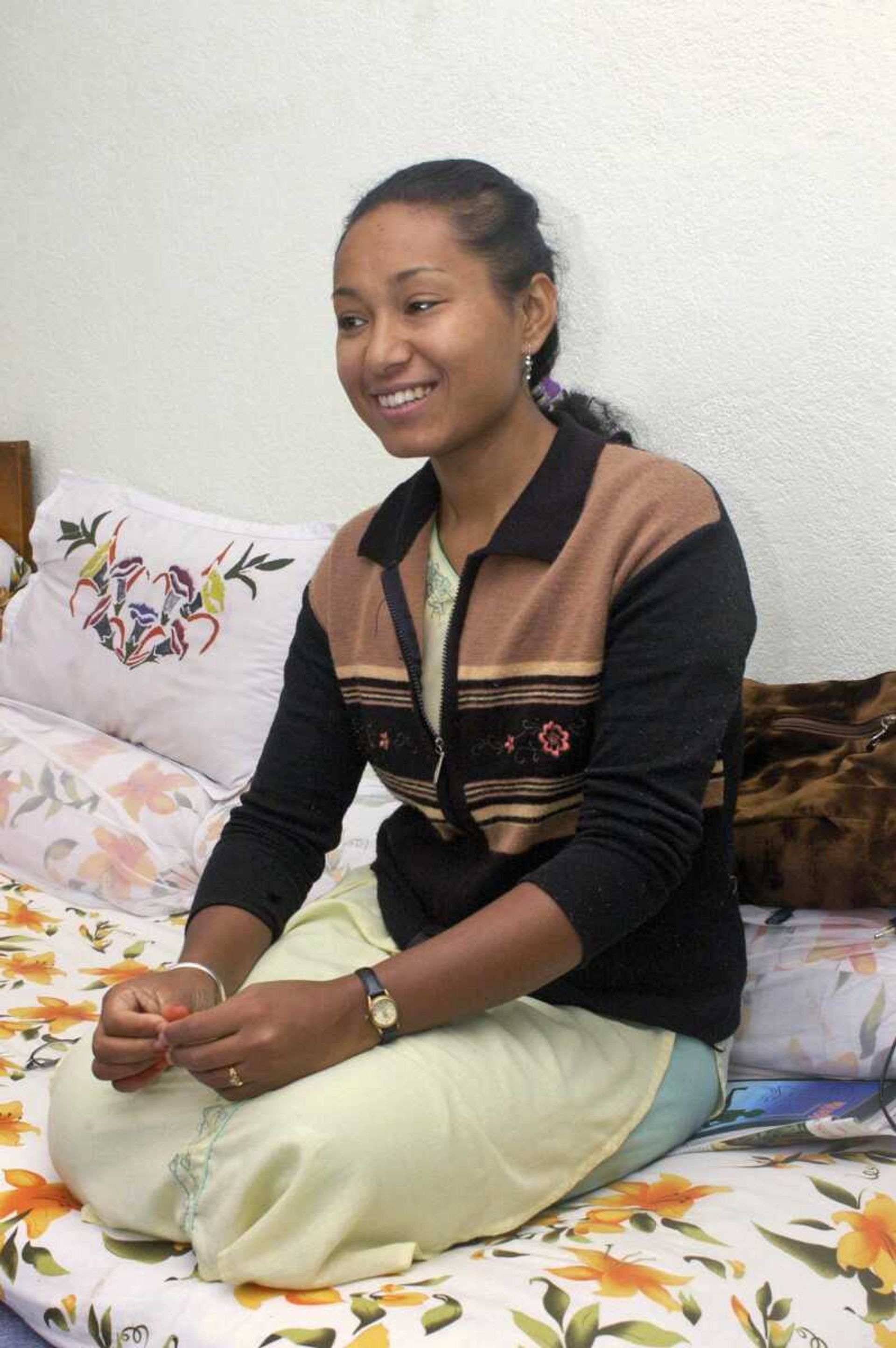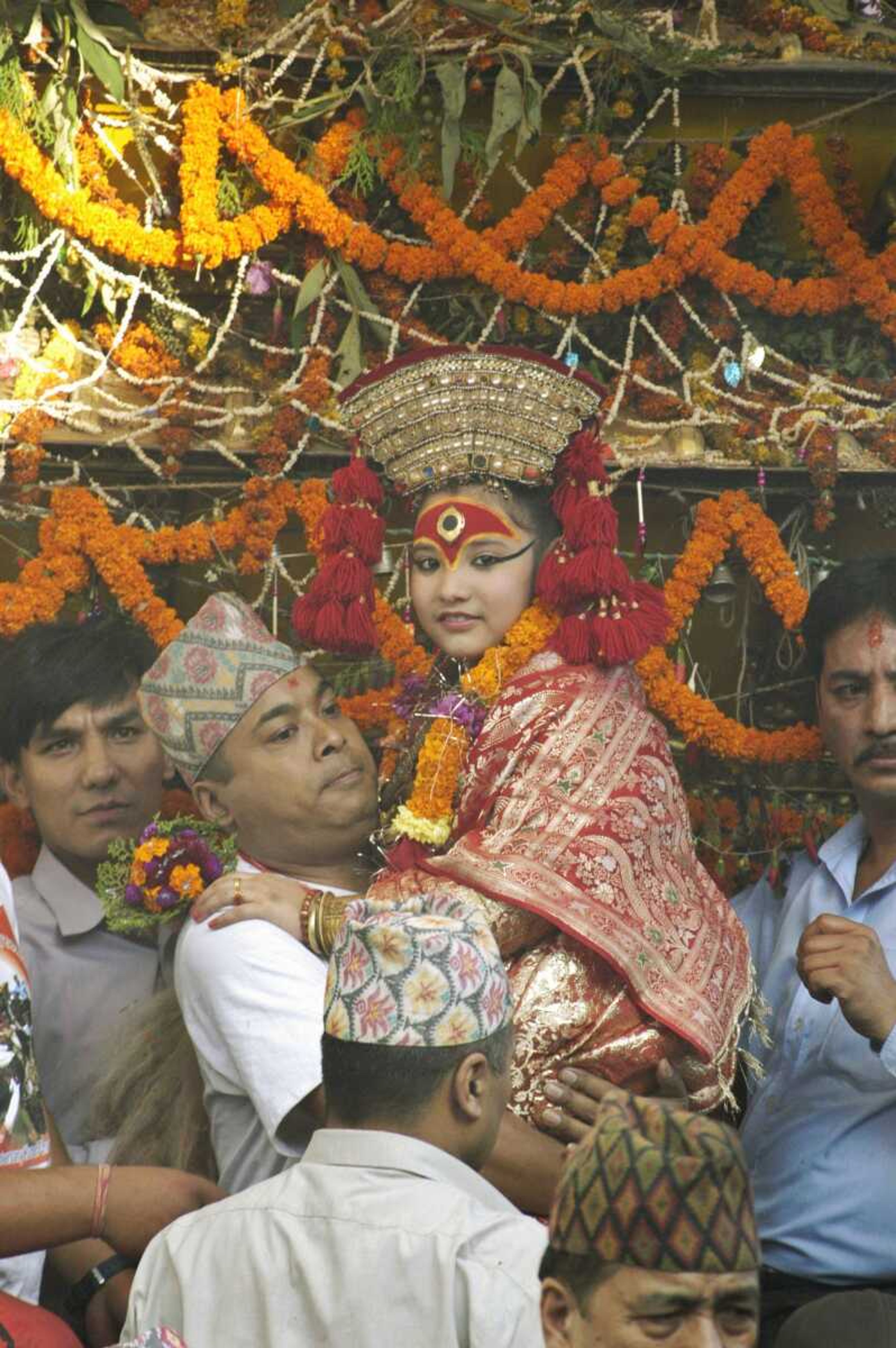KATMANDU, Nepal -- The living goddess likes bubble gum.
During a festival giving thanks for the monsoon rains, dozens of chanting worshippers pulled her enormous wooden chariot through the narrow streets of Katmandu's old city. Thousands of cheering people pressed forward, hoping for a blessing.
But the goddess -- a child wrapped in red silk, a third eye painted on her forehead as a sign of enlightenment -- took little notice of the joyous riot. Instead, she stared ahead intently, her jaw pumping furiously. Then, finally, she blew a yellow bubble about the size of a plum.
Priti Shakya is 10 years old, the daughter of a family of poor goldsmiths. At the age of 4, a panel of judges examined her in a series of ancient ceremonies -- checking her horoscope, searching for physical flaws and, as a final test, seeing if she would be frightened after a night spent in a room filled with 108 freshly decapitated animal heads. She was not.
So Priti became a goddess, worshipped as the incarnation of the powerful Hindu deity Taleju, and going into near-complete isolation in an ancient Katmandu palace.

She will return home only at the onset of menstruation, when a new goddess will be named. Then Priti will be left to adjust to a life that -- suddenly -- is supposed to be completely normal.
For nearly four centuries the tradition has held, but modernity is coming, even to the goddess.
Among the Shakyas, the goldsmith caste that chooses the goddess from its daughters, it has become increasingly difficult to find families willing to send their girls away.
Teachers have been appointed, keeping the goddess on the same academic track as any other girl her age. There's also television in the palace these days and there's talk that she may be allowed someday to live at home with her family.
It is an attempt to give some normalcy to the goddesses, who can flail desperately when they return to the outside world.
Rashmila Shakya, one of eight ex-royal kumaris still alive, remembers the pain of her return. Now a 25-year-old computer technician, she left the kumari palace at age 12. She'd had no proper schooling, and her feet had not touched the outside ground for years. And while her family could visit, even they saw her as a goddess. Her return home took a heavy toll.
"I didn't even know how to walk around like a regular person," said Shakya, a quiet, bookish young woman who dreams of becoming a software designer. "The crowds frightened me."
Still, she said, she doesn't regret her time in the palace.
"Not everybody gets to be a goddess," she said, smiling. "In one life, I got to have two lives."
Connect with the Southeast Missourian Newsroom:
For corrections to this story or other insights for the editor, click here. To submit a letter to the editor, click here. To learn about the Southeast Missourian’s AI Policy, click here.







